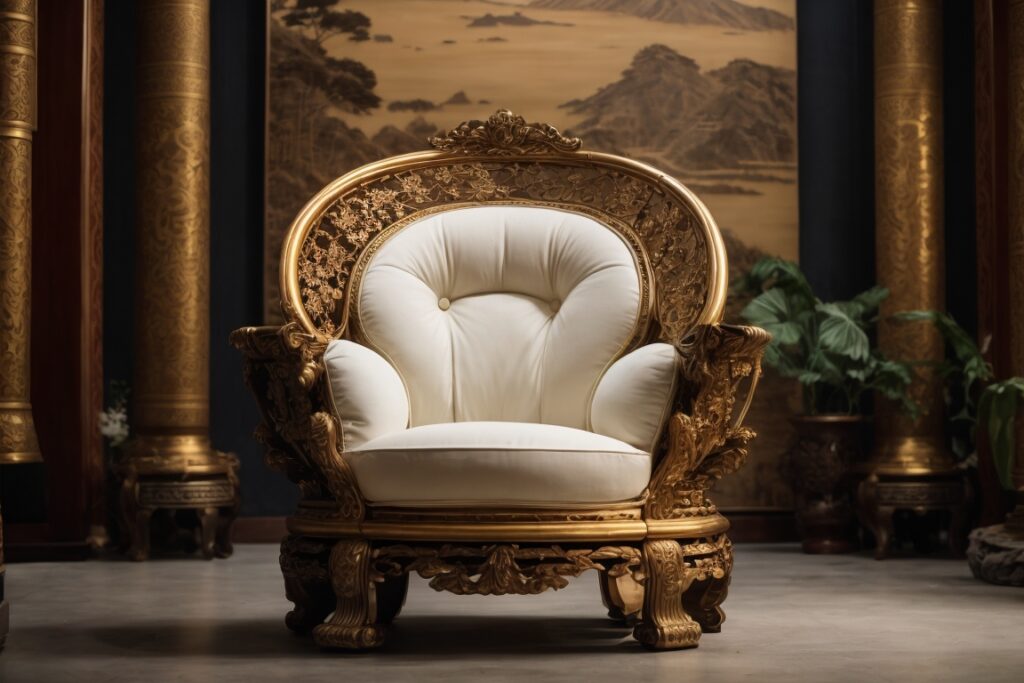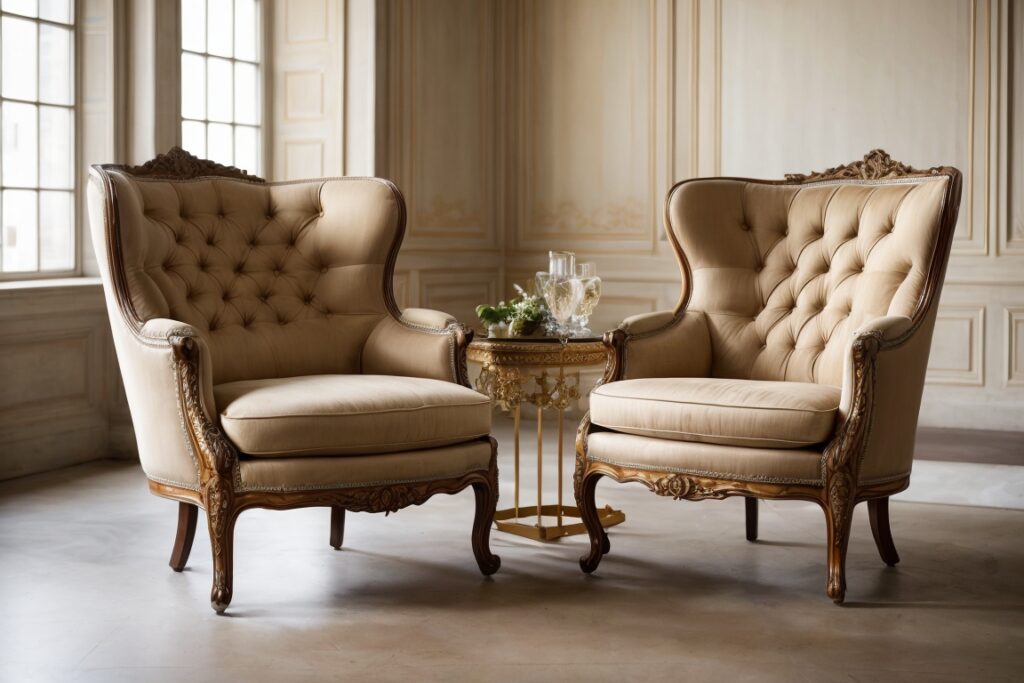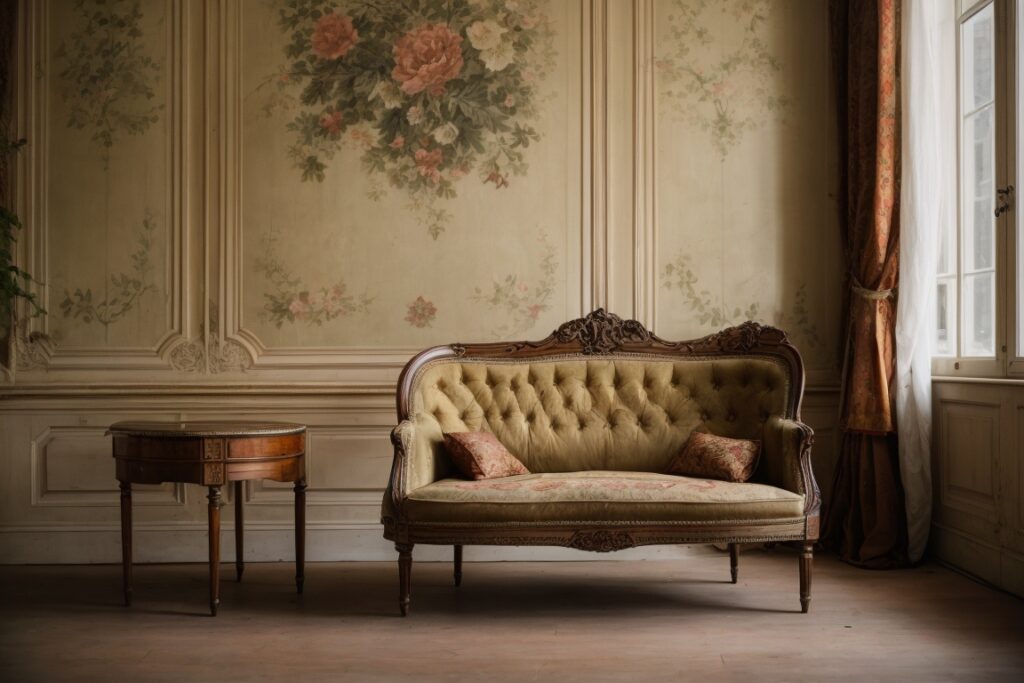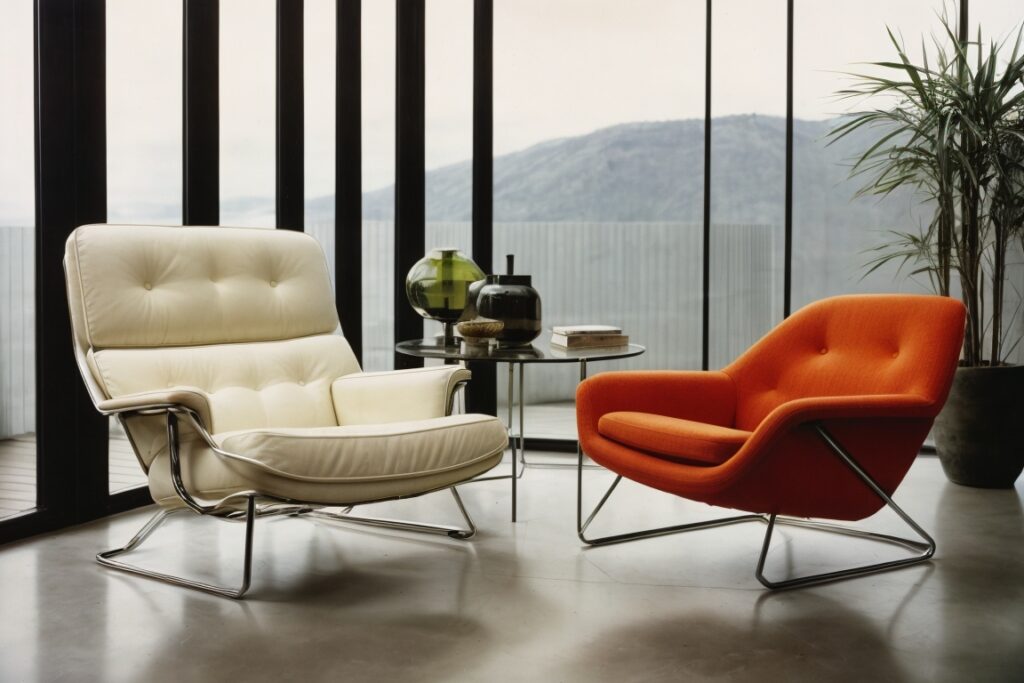From its humble beginnings as a symbol of power to its modern-day status as a haven for relaxation, the armchair has undergone a fascinating evolution over the centuries. This journey, woven with threads of craftsmanship, cultural influences, and technological advancements, reveals not only a changing approach to comfort and design but also a reflection of society’s evolving values and priorities.
Short History of the Armchair
| Period | Key Features | Notable Styles |
|---|---|---|
| Ancient Civilizations (3000 BC – 476 AD) | – Symbol of power and authority – Crafted from wood, stone, and metal – Elaborate carvings and decorations | – Egyptian Thrones – Mesopotamian Chairs |
| Medieval Period (476 – 1485) | – Evolving role: power and leisure – High-backed and straight-line designs – Focus on practicality and comfort | – Savonarola Chair – X-frame Chair |
| Renaissance (1485 – 1600) | – Emphasis on aesthetics and craftsmanship – Elaborate carvings, luxurious fabrics, and gilded embellishments – Emergence of iconic styles | – Wingback Chair – Bergère Chair |
| 18th & 19th Centuries (1700 – 1899) | – Mass production makes armchairs more accessible – Rise of iconic styles: Queen Anne, Chesterfield – Technological advancements like spring mechanisms | – Queen Anne Armchair – Chesterfield Sofa |
| Modern & Contemporary (1900 – Present) | – Exploration of form and function – Modernist designs: Wassily Chair, Barcelona Chair – Sustainable materials and smart features | – Wassily Chair – Barcelona Chair – Modern Ergonomic Designs – Smart Armchairs |
Early Beginnings: Thrones of Comfort and Power

The earliest precursors to the modern armchair emerged in ancient civilizations, where stools and thrones served not just as seating but also as markers of status and authority. In Egypt, Pharaohs sat upon intricately carved wooden thrones adorned with gold and precious stones, while in Mesopotamia, Mesopotamian rulers reclined on elaborately decorated chairs fashioned from stone or metal. These early armchairs, though far from the plush comfort we know today, spoke volumes about the power and prestige of their occupants.
As empires rose and fell, the armchair’s journey continued through the hands of skilled artisans in various cultures. China, for instance, developed a tradition of crafting intricate armchairs from bamboo and lacquer, while the Roman Empire produced elaborately carved armchairs adorned with bronze and ivory. Each iteration reflected the cultural and aesthetic sensibilities of the time, revealing a growing appreciation for both comfort and artistic expression.
Medieval and Renaissance: A Seat at the Table of Power and Leisure

The medieval era saw a significant shift in the role of the armchair. While it remained a symbol of authority for the elite, it also began to appear in the homes of wealthy merchants and nobles. This period witnessed the emergence of styles like the Savonarola chair, characterized by its high back and straight lines, and the X-frame chair, known for its sturdy construction and simple elegance. These chairs, often crafted from oak or walnut, reflected a growing appreciation for comfort and practicality.
The Renaissance ushered in a newfound focus on aesthetics and craftsmanship. Armchairs became more elaborate, adorned with intricate carvings, luxurious fabrics, and gilded embellishments. The iconic Wingback chair, with its high wings and enveloping comfort, emerged during this period, while the French introduced the ever-popular Bergère chair, known for its upholstered backrest and graceful curves. These chairs were more than just seating; they were objets d’art, showcasing the wealth and taste of their owners.
18th and 19th Centuries: Comfort for the Masses

By the 18th and 19th centuries, the armchair had firmly established itself as a ubiquitous piece of furniture in households across Europe and America. The Industrial Revolution brought about mass production techniques, making armchairs more affordable and accessible to the middle class. This period saw the rise of iconic styles like the Queen Anne armchair, with its distinctive cabriole legs and shell-shaped back, and the Chesterfield sofa, known for its deep buttoned upholstery and timeless elegance.
Technological advancements also played a significant role in the evolution of the armchair. The invention of the spring mechanism in the 18th century led to a new era of comfort, while the development of new materials like steel and leather expanded the possibilities for design and construction. The armchair was no longer just a symbol of prestige; it was becoming a haven for relaxation and leisure, enjoyed by people from all walks of life.
Modern and Contemporary Designs: A Reflection of Our Times

The 20th and 21st centuries have witnessed a further exploration of form and function in armchair design. Modernist pioneers like Marcel Breuer and Mies van der Rohe challenged traditional notions of comfort and aesthetics, creating iconic designs like the Wassily chair and the Barcelona chair that emphasized functionality and clean lines.
As we move into the 21st century, armchair design continues to evolve, reflecting our changing lifestyles and priorities. Sustainability, technological innovation, and personalized design are now key trends influencing the armchair landscape. From ergonomic designs promoting good posture to smart chairs that adjust to your body temperature, the armchair is constantly adapting to meet the needs of modern life.
Conclusion: A Timeless Symbol of Comfort and Style
The journey of the armchair is a testament to human ingenuity and our enduring desire for comfort and beauty. From its ancient origins to its modern-day iterations, the armchair has served as a reflection of our values, our evolving tastes, and our technological advancements. As we look towards the future, the armchair will certainly continue to evolve, offering us a place to relax, unwind, and connect with ourselves and others.







